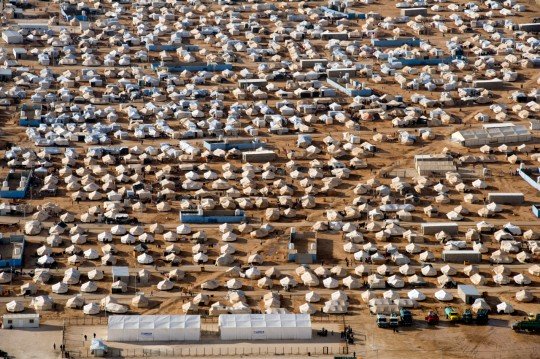I recently visited a number of countries on a monitoring mission for the joint IOM-UNDP Global Project on Mainstreaming Migration in National Development Strategies. Funded by Switzerland, this project is implemented in eight countries (Bangladesh, Ecuador, Jamaica, Kyrgyzstan, Moldova, Morocco, Serbia and Tunisia) and provides some successful examples of how migration and development intertwine.
As a development organization, our role is to ensure that development issues such as governance, economic opportunities, conflict prevention, climate change adaptation, environmental management are embedded in the short, medium and long term support provided to migrants, displaced people, refugees and their host communities.
The number of migrants today is massive. Globally, there are 244 million people on the move, with over 65 million forcibly displaced mainly by conflicts and, on average, 22 million annually displaced by climate change, disasters and environmental degradation. The movement of people takes place worldwide. For example, every year, about 500,000 Bangladeshis leave their country to work abroad. Over 1.3 million Jamaicans live in the USA, Canada and the UK. Their remittances contribute over 16 percent of Jamaica’s GDP, according to the Caribbean Policy Research Institute.
The situation in Moldova is much more precarious. Economic instability, collapsing incomes and rising unemployment are leading to massive emigration. According to the Information and Security Services of the Republic of Moldova, between 1.2 million and 2 million Moldovan citizens (almost 45 percent of a population of 3.6 million) are working abroad, mostly without legal authorization.
At UNDP, we have a proven track record in addressing the drivers and root causes of migration such as the lack of economic opportunities, poverty, climate change, environmental degradation, conflicts and poor governance, but also harnessing the positive benefits of migration. For example,
- In all countries mentioned above, UNDP and IOM have supported governments to establish coordination mechanisms for migration and development, and to design and implement policies and strategies that integrate migration and poverty reduction.
- Jamaica’s government has taken a proactive approach in managing and measuring migration indicators, primarily by integrating international migration into the national development plan, a plan that is key to poverty reduction in Jamaica.
- In Bangladesh, UNDP and IOM helped the government develop a five-year plan including “migration and development” as an issue to be addressed through a multi-sectoral approach.
With our support, the Bangladeshi Government is also implementing an Access to Information programme for migrants. This initiative is ensuring safe overseas migration by creating a service platform for migrant workers, and developing their skills so that they can earn higher incomes and better support their families back home.
- In Moldova, our UNDP Migration and Local Development Initiative aims to improve access to local public services, by empowering and engaging migrants in sustainable local development and poverty eradication activities. To-date, over 200,000 people are benefiting directly and indirectly from better services as a result of migrants’ substantive participation in local planning processes and financial contributions for local projects.
For those who have left their homes looking for better opportunities; families, including children that might have been left behind in home countries; people displaced within their own countries and refugees, there is no other alternative than mainstreaming migration into national and local development plans and strategies. Implementing these plans and strategies will help eradicate poverty wherever its ugly head surfaces.
To me, the poor and vulnerable communities are the real heroes as we witness unprecedented human movement. These communities in Lebanon, Jordan, Turkey, Uganda, Bangladesh, etc. host thousands of refugees despite their own challenging circumstances. Addressing the drivers of migration in the various countries of origin is therefore essential to reduce poverty and achieve the SDGs.
Source: http://bit.ly/2yiXFd1











